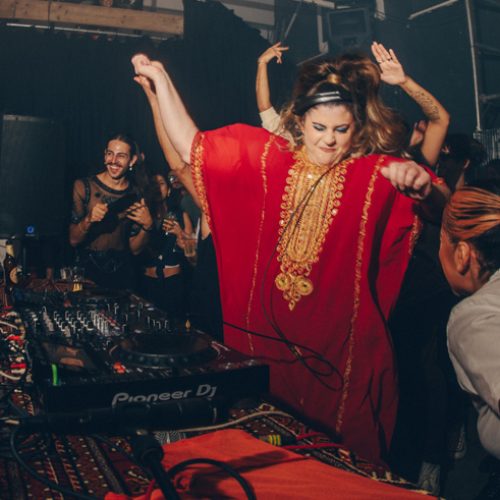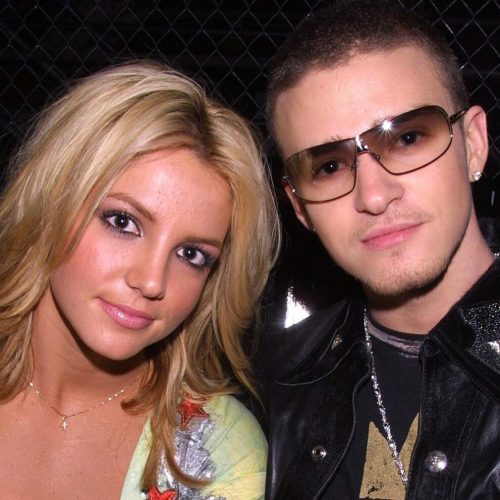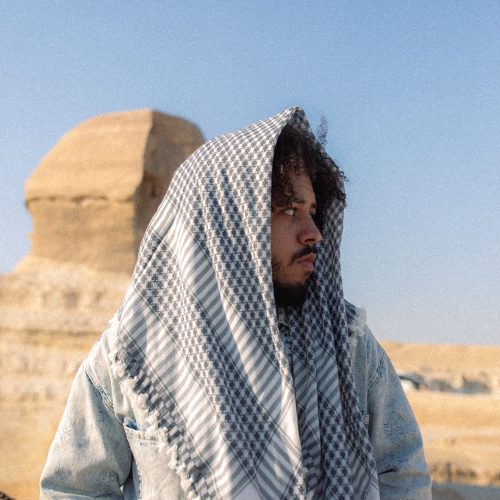You’ll only have to spend a few minutes in Cairo to get a taste of it. Chances are, your taxi driver is blaring a Mahraganat track. But if the classic Um Kulthoum is more his or her jam, you’d certainly be confronted with the genre’s rifeness in countless of the city’s urban cafes.
Electro Chaabi, as the genre is also known, has taken over the North African nation. Irrespective of its popularity, Mahraganat is hard to miss. It’s extravagant, raw, loud and in simple terms, fun. It is no coincidence that its name means ‘festival’ in Arabic.
Yet despite its prevalence, Maharaganat is only recently gaining true respect as a genre worth paying attention to. Artists like Alaa Fifty and El Sadat hardly have the same veneration that the likes of Haifa Wehbe and Nancy Ajram quickly gained when they first emerged onto the regional music scene.
In fact, only the opposite is true. Mahraganat is a constant subject of condemnation by Egypt’s largely conservative society, even seen as vulgar. Its roots in the slums of Cairo probably have something to do with that. The genre saw its beginnings in 2006 in Salam City (a Cairo slum) when a few MCs (El Sadat amongst them) got together to mix music for local weddings. The result? A kaleidoscopic mix of drum-heavy chaabi Egyptian sounds and electronic dance music over heavily auto-tuned raps.
With 2011 came the Arab Spring, and alongside political turmoil came the transformation of Mahraganat lyrics to reflect the social and political issues locals faced. But the genre’s popularity is not exclusively owed to its politics. Mahmoud Refat, founder of 100Copies, the record label at the heart of the genre called the revolution “a promotional effect” in an interview.
More than anything, its popularity has to do with the genre’s abrasiveness. No topic is off the table of discussion when it comes to Mahraganat, and the public found in it something to relate to.
Yet, artists got no radio airplay, but YouTube quickly turned into their playground. And by 2014, it was simultaneously everywhere and nowhere. You couldn’t escape it, yet somehow, Mahraganat was anything but legitimate.
In more ways than one, Mahraganat’s emergence is reminiscent of the early days of hip hop in 1970s New York City. The decades that followed saw the genre expand beyond the city’s boroughs. Almost 50 years since its birth, hip hop has not only found a fanbase in the Middle East and North Africa, but imbedded itself within the local music industry.
Recent years have seen the growth of massive scene that’s taken over the region, with hip hop’s roots in New York’s inner-cities an afterthought, and its often-provocative lyrics hardly reason for condemnation.
It should come as no surprise, as Arab societies have always been more than welcoming to Western forms art and entertainment. But if the genesis of hip hop in the region is any indication, it’s of Arab society’s schizophrenia. Arabs don’t have a problem with vulgarity, we only have a problem with vulgarity displayed by Arabs.









